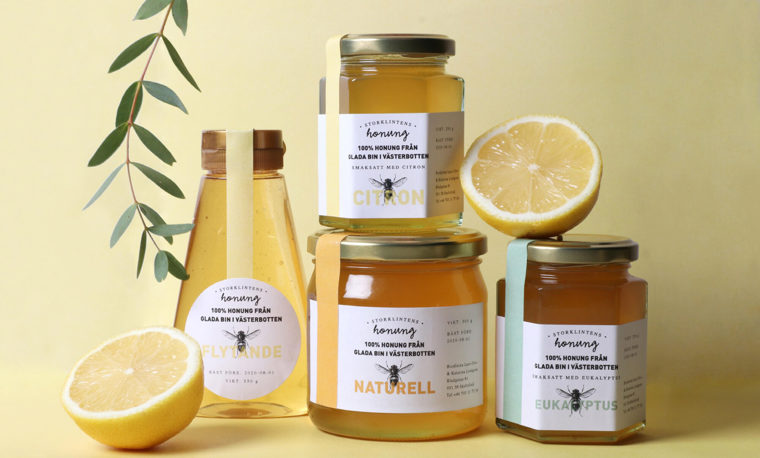Bees on the roof – small pollinators with great importance
But how do the bees actually live throughout the year? Follow along with the annual cycle of the bee colony and learn more about our smallest and flying visitors!

On the roof in the northeast corner of Sara kulturhus, the beehives are housed in specially constructed structures – also crafted from wood.
Spring and summer – The season of work and growth
As the spring sun begins to warm Skellefteå, the bees awaken after a long winter. Their first flights often occur as early as February or March, known as "cleansing flights," where they relieve themselves after months of dormancy. Activity in the hive quickly increases thereafter.
During summer, a bee colony can consist of up to 90,000 bees, each with a specific role. The queen, the heart of the colony, can lay up to 2,000 eggs per day. Worker bees collect nectar and pollen, build wax combs, and care for the hive's brood. Drones, the male bees, have one sole purpose—to mate with the queen.
Summer is also a time of expansion. If the hive becomes overcrowded, the colony may swarm, meaning the queen leaves the hive with a large portion of the bees to find a new home. While swarming may appear dramatic, the bees are very peaceful during this process.
Beekeepers from Storklintens Honung visit the hives regularly during summer to ensure the colony's health, provide space for honey, and check that the queen is fulfilling her duties.
Autumn – Honey harvest and winter preparations
As summer ends and flowers stop producing nectar, it's time to harvest the honey. The honey collected comes from flowers in and around Skellefteå's center, where bees can fly up to two kilometers from their hives. A single 500-gram jar of honey represents approximately three million flower visits!
After the harvest, the bees begin preparing for winter. The colony size decreases from around 70,000 to 20,000 individuals. Beekeepers provide the bees with an energy-rich sugar solution to replace the honey they would otherwise consume.

Albin and Lars-Olof Lindgren from Storklintens Honung visit the beehives on the roof of Sara kulturhus.
Winter – Survival in the cold
When temperatures drop below freezing, the bees enter their winter phase. To stay warm, they form a cluster inside the hive, with the queen at the center. Worker bees take turns sitting on the outer layer, vibrating their wings to maintain a temperature of around 20°C – even when it’s -25°C outside!
During the cold period, the bees rarely leave the hive, but the entrance (called the "flight hole") remains open so they can fly out on warmer days. The first proper spring flight is always a welcome sign of a new season approaching.
Part of Sara kulturhus' sustainability efforts
The beehives at Sara kulturhus are more than just a home for our small pollinators – they symbolize our commitment to sustainability and biodiversity. Additionally, our home-produced honey is served at Restaurant Mandel, allowing visitors to taste the fruits of the bees' hard work.
If you'd like to take a jar home or gift a delicious, locally-produced present, you can find the honey in our pop-up cabinet in the Southern Foyer.
Storklintens Honung
The beekeepers responsible for the hives at Sara Kulturhus are the Lindgren family – Lars-Olof, Katarina, Mattis, and Albin – who work together on beekeeping as a family hobby. In the village of Storklinten outside Norsjö, the Lindgren family has their summer cottage, where it all began with the purchase of their first hive in 2013.
– "It was an interest I had for some time, and when I changed jobs and had more free time, it was a good opportunity to develop that interest. I took a beekeeping course through Studieförbundet Vuxenskolan, and that’s how it started," says Lars-Olof.
More about Storklintens honung



